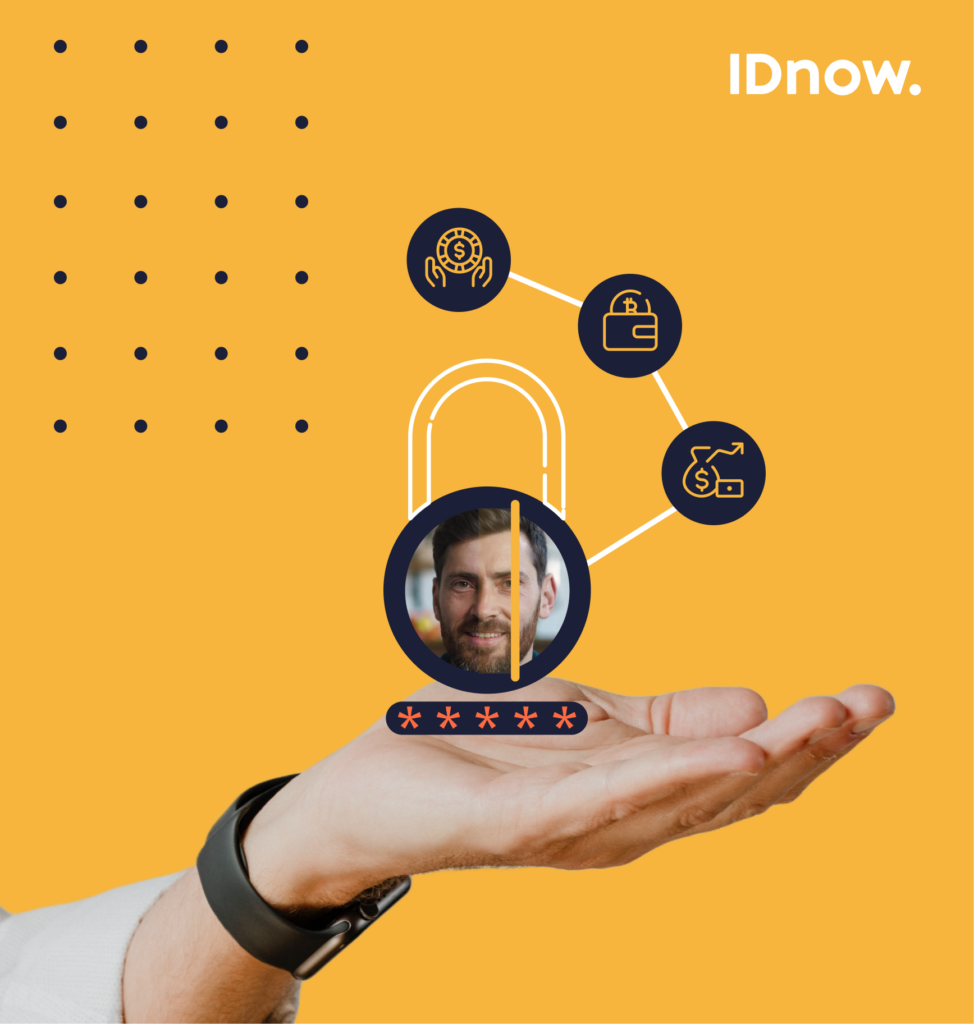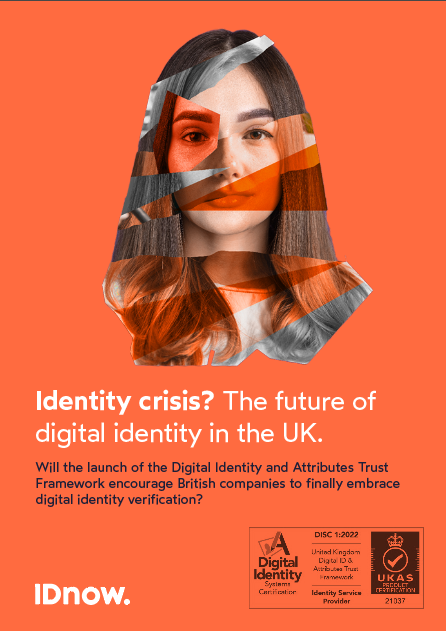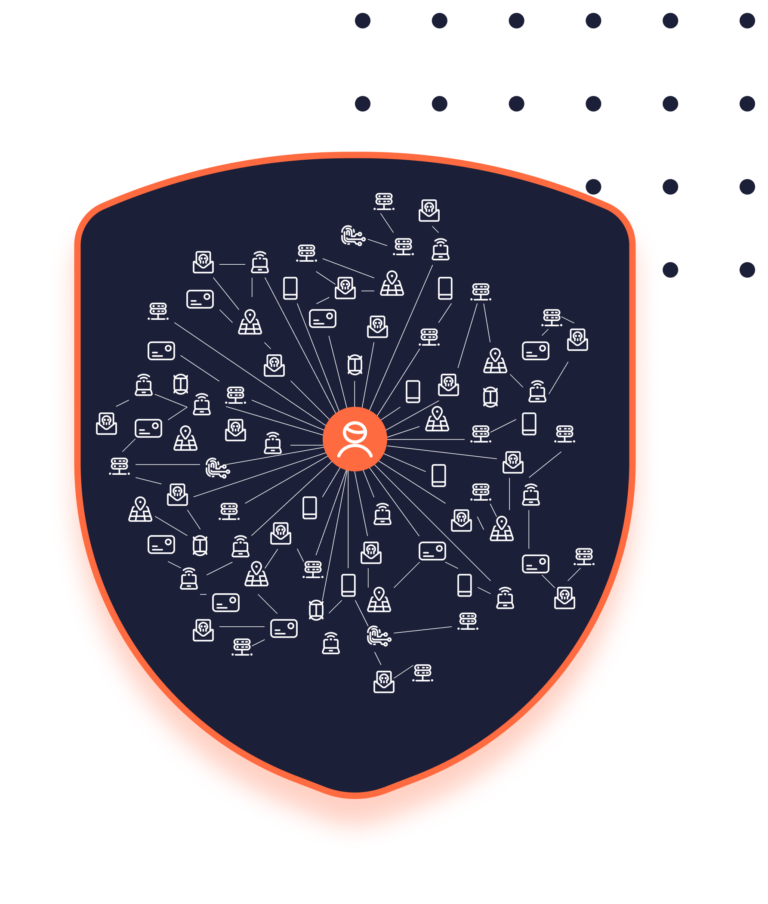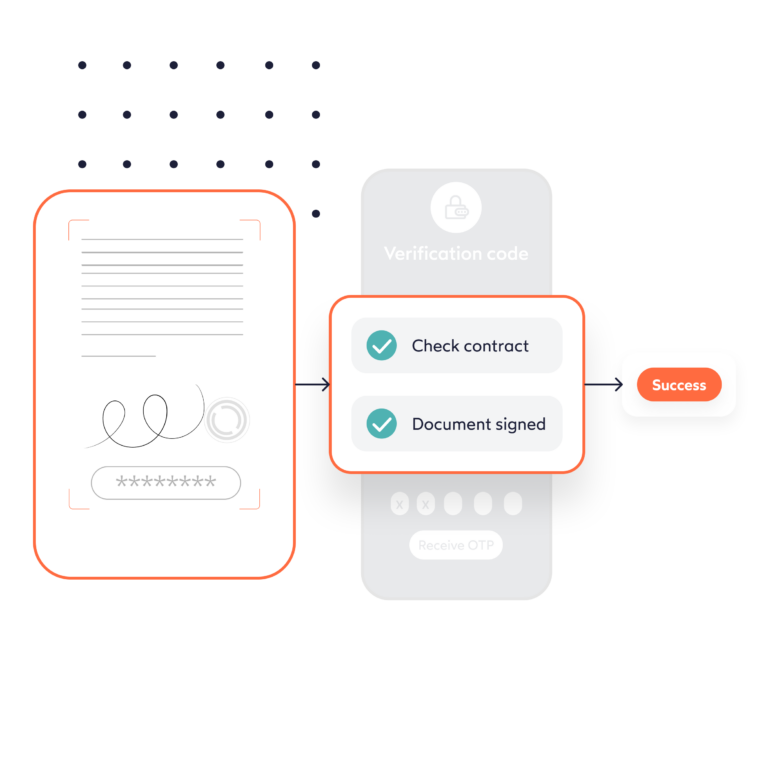We interview experts from the world of financial services, crypto and gambling to discover some of the year’s major regulatory and technological surprises, and the trends awaiting the identity verification sector in 2024.
We click, we scroll, we awkwardly stare at the camera, and we do that ‘press, but don’t actually press, just lightly rest it upon the side button thing’ every single day.
As we approach 2024, it’s no exaggeration to say we spend most of our lives online; personally, and professionally.
In fact, we’re probably not too many years away from our digital selves becoming more trusted and, in a way, able to do more than our soft, fleshy human forms. Able to register, transact and be recognized quicker and more effectively online than in person.
Every industry has gone digital. Fact. It’s not even a controversial and outlandishly sci-fi statement to make anymore. We buy, we sell, we save, we transact, we subscribe and gamble – all online, often without physically interacting with another person, whether in person or online.
So, if we’re spending more time online, then it’s important to be able to prove our identity – that we are who we say we are, and that the people we’re interacting with are who they claim to be. This is where industry regulations, rules and established processes like identity verification data and Know Your Customer (KYC) come into play. Laws ensure online users behave in a legally binding and appropriate way.
Accountability vs anonymity.
But, what about an internet user’s right to remain anonymous and even more importantly, their right to privacy?
The desire for anonymity may not necessarily be rooted in the wish to engage in illegal activities away from prying eyes, but more as a genuine concern for how their personal identifiable information and other important data could be hacked and tracked or even used for fraudulent purposes.
How to balance accountability with anonymity has been a conundrum since the internet was first invented and is a recurring bone of contention whenever new regulation or frameworks are created. The ongoing, fractious exchanges on the details of the proposed Electronic Identification, Authentication and trust Services (eIDAS 2.0) have been testament to that. More on that later.
Despite tech titans’ claims to the contrary, there is no simple one-size fits all answer to the question of how to offer both anonymity and privacy. If there was, organizations would never be fined for internal failings like AML and KYC deficiencies; users would never fall victim to fraud; and the internet would be a wonderland, free from financial crime, scams and hate speech.
But it’s not.
A potential answer lies in the balancing act between the needs of the corporation and the needs of the consumer, in the open and ongoing dialogue between regulatory decisionmakers and industry insiders for the common purpose of a secure and attractive marketplace, and in the clever deployment of technology that can optimize processes while ensuring a superior digital customer experience.
In this blog, we speak to our Spotlight Interview alumni, as well as IDnow’s own experts to discover the sector developments that have surprised them in 2023, and what trends they predict will have the most impact in 2024.

Contents
Is that the real you, or is that just your identity?
The global digital identity solution market is projected to grow from $34.5 billion in 2023 to a staggering $83.2 billion by 2028. The main reasons for the growth are the increasing usage of online services (across an ever-expanding range of sectors and use cases); the introduction of more cost-effective AI/ML-powered services; and the rise in SME adoption of identity management solutions.
It’s safe to say that the digital identity verification market has never been healthier. Indeed, there were 61 billion digital identity verification checks conducted in 2023, a number that is predicted to grow by 16% to 71 billion by the end of 2024. In a world of just 8 billion people, these numbers are simply staggering.
Is traditional banking dead?
Unsurprisingly, considering how important identity checks are in heavily regulated industries like financial services, the banking sector performed the lion’s share of identity verification checks in 2023 (37 billion), which is more than half of the global identification market. The days of visiting branches to verify your identity to open a bank account, or make a transaction payment are nearing the end, as evidenced by closures of approximately one in eight bank branches in the UK in 2023.
In 2023, we’ve seen a lot of interest in FinTechs, including neobanks. The digital-only trend has certainly not gone unnoticed by traditional banks, which are now looking into what technologies and what partners can do to help them improve aspects such as user experience.
Jason Tucker-Feltham, Global Head of Crypto and FinTech at IDnow.
The use of technology to optimize operational efficiencies, enhance customer experience and ultimately reduce fraud has become pivotal, regardless of the sector, but especially in financial services. Financial services are often at the forefront of technological innovation and leading the charge toward safer and more secure environments for transacting.
Little wonder then that the global growth in volume of identity verification checks has been driven largely by banks adopting stronger biometric identity verification methods in a bid to combat fraud, in particular account takeover and card-not-present fraud.
“It will come as no surprise that financial services continue to be the industry most exposed to fraudsters,” said Lovro Persen, Director of Document and Fraud at IDnow. “Fraudsters and the technology at their disposal are becoming increasingly more sophisticated.”
The never-ending cat and mouse game of fraud prevention.
The amount of money lost to fraud is staggering. In the UK alone, approximately £3 billion is lost every single year.
Reflecting on 2023, Lovro said that there were three things that surprised him:
“First was the rapid rise of social engineering, from phone calls to SMS, emails, phishing, everything has increased. The second surprise for me is that physical document fraud has almost completely disappeared – it’s not zero, but it’s a very steep curve down. Unfortunately, the quality of fraudulent documents has improved dramatically, with hologram production at such a high level now that they’re more difficult to detect.”
The third development that surprised Lovro in 2023 was how innovative many fraudsters have become regarding the use of synthetic fraud, synthetic identities and deepfakes.
I thought it would take another few years before we got to this stage. Up until very recently, synthetic fraud was very rudimentary, but it is getting much better and more sophisticated.
Lovro Persen, Director of Document and Fraud at IDnow.
As identity verification methods like liveness checks are known to prevent spoofing and other types of fraud, organizations that have not been using biometric verification methods in 2023 should be doing so in 2024 to protect their business, their customers, and their reputation.
While the use of the latest forms of identity verification technology can certainly help organizations learn more about their customers, and thereby prevent fraud in the process, there are certain types of social engineering fraud, like romance scams, and pig butchering scams that take advantage of human emotional frailty, so are harder to safeguard against.
Ex-police officer and self-professed fraud nerd, Paul Stratton agrees that the increase in social engineering is a worrying trend that will unfortunately continue into 2024 and beyond.
“Romance and ‘repeat victimization’ fraud (e.g.: a romance fraud victim is steered into investment fraud) will continue to prosper. Breaking the cycle of manipulation and coercion is almost impossible when that person believes it is all legitimate… This is when banks and financial institutions must step in.”
For Jinisha Bhatt, AML and crypto fraud investigator, who also dedicates a lot of her time researching and helping to prevent human trafficking, it’s also important to factor in the link between social engineering fraud, and human trafficking violations.
Today, highly organized scam compounds run rampant in countries like Cambodia, Laos and Myanmar and force ‘workers’ to groom, manipulate and defraud victims of romance and investment scams worldwide.
Jinisha Bhatt, AML and crypto fraud investigator.
“The larger the pool of financial fraud victims, the higher the demand for scam factory workers. This is a machine that continues to feed itself at an insurmountable cost to human beings on each end of the cycle. While we focus our efforts on preventing pig butchering scams, we must also continue to enhance international cooperation among law enforcement and strengthen measures to impose human rights-related sanctions against entities and individuals who profit from this crime.”
Whatever the reason banks or any organization chooses to overhaul their customer onboarding process and internal controls, an identity verification platform that can address the aforementioned three driving forces: optimize operational efficiencies, enhance customer experience, reduce fraud – will further accelerate the mass adoption of digital identity verification services.
As consumers become more wary about sharing their PII data due to privacy concerns or the risk of data breaches and the rise of identity theft, synthetic identity fraud or account takeover there is a need for organizations to switch their focus from frictionless user journeys to optimized user journeys with ‘good friction’ that not only deters fraudsters but also increases consumer confidence and trust in the organizations onboarding process. It is a balance between convenience and security for consumer confidence that needs to be carefully managed.
Play time’s over: The year that crypto was forced to grow up.
As a sector that by its very existence questions the limitations of established systems and structures, it is understandable that many crypto firms experiment with new ways of doing business, with some even making the risky decision to forgo traditional KYC checks altogether. While 2023 proved an important and somewhat stabilizing year for the evolution of the industry, with both the Markets in Crypto Assets regulatory framework,( MiCA) and the UK’s proposed regulatory regime, taking significant steps toward completion, it was also a somewhat unsettled year.
“I think what surprised me most about 2023 was the sheer level of turbulence. In fact, there is still ongoing litigation with many major crypto names. Reassuringly however, this hasn’t halted innovation, which is what crypto is all about. We saw the likes of Worldcoin launch, which is a new take on identity and proof of personhood, so it’s these kinds of developments that show that crypto is making significant strides in the right direction,” said Jason.
The decision to convict the founder of FTX of money laundering and fraud sent shockwaves through the industry and should act as a warning shot that the upstart industry of crypto needs to play by the established rules of financial services, especially regarding Anti-Money Laundering directives, and KYC processes. Is play time over for crypto? If not, then the days of transacting in complete anonymity, without restrictions, and of celebrities promoting unregulated platforms, certainly are.
While the digital identity verification industry, and to an extent, the wider technological community is sure to admire the innovative steps taken by crypto to think outside the box in 2023, regulatory bodies are losing patience. And with 2024 likely to be the year that the Transfer of Funds Regulation, MiCA, and the UK’s equivalent will be implemented, that patience is sure to be tested more than ever.
Some argue that existing and upcoming crypto requirements are too harsh, prohibitively so, especially the UK’s financial promotions regime for crypto.
“A lot of crypto firms currently perceive financial promotions as a massive burden and barrier of entry to the UK market. I hope the restrictions are softened somewhat in 2024, otherwise what we may find is a reduction in number of crypto firms in the UK market, which may, in turn push crypto users to either grey market platforms or to offshore operators, which would surely put a dent in the UK’s plans to become an international crypto hub,” said Jason.
In general, though, Jason remains optimistic about the state of crypto in 2024.
“We’re on the cusp of new individuals and new flows entering the crypto space, which will be a very beneficial development and hopefully lead to a more positive crypto environment in 2024. Also, in March of next year, we will see the bitcoin halving, which is an exciting time for the crypto market, because the rate of supply of newly mined bitcoin is halved.”
Read more about the year that crypto would rather forget (2023) in our ‘Time to grow up? Crypto and fintechs rack up more AML fines than traditional financial services.’ blog.
Regulatory reflection: Betting on an online future.
Creating regulatory frameworks that not only protect the consumer, but also provide an attractive environment for operators is essentially the role of regulation, and regulatory bodies from around the world have certainly been busy this year.
From the above crypto frameworks to the reassessment of existing gambling regulations in as disparate markets as the UK and Curaçao, 2023 has reminded every industry, especially gambling, of the importance, and opportunity of regularly updated regulation.
“One of the major surprises in the gambling industry for 2023 was that Brazil is now firmly on track to regulate both sports betting and online casinos, it’s the right thing to do because regulating the full portfolio of products will be critical to the success of the Brazilian market, including the ability of the authorities to clamp down on the grey market of operators that choose not to apply for a license,” said Martin Lycka, SVP American Regulatory Affairs and Responsible Gambling at Entain.
“Elsewhere in LatAm, Peru and Chile have been exploring regulation in 2023, and I do think that North American markets and regulators will also be keeping a close eye on proceedings too.”
Our own gambling expert, Roger Redfearn-Tyrzyk agreed with Martin regarding the sunny outlook for the LatAm online gambling market and expressed his pleasant surprise at the pace of gambling regulation in Brazil.
Reflecting on 2023, Roger did admit that not all surprises were of the positive variety.
One of the major surprises for me was learning of the increasing numbers of German players that were migrating to the grey market, due in part to the high tax rates subjected to regulated platforms, and other player restrictions.
Roger Redfearn-Tyrzyk, Director of Global Gambling at IDnow.
Such restrictions include 5 second spin durations, €1 stake limit, and €1000 max deposit per month across all licensed operators. In a bid to cut costs, operators who are compliant and licensed in Germany may decide to either pull out of the market, reduce their sponsorship budget (which will negatively impact grassroots sports), or focus on other markets.
“It’s a lose-lose, and not a great situation for the German economy, but I remain positive that German regulators will take the time to assess the situation and perhaps reevaluate its tax strategy.”
Discover more about the battle currently being waged on black market gambling in Germany in our blog, ‘Exploring black market gambling in Germany.’
Roger also believes that while the UK market is doing the right thing by running a series of consultations on revisions to its online gambling regulation, like proposed financial risk checks, he did worry about the impact.
“Unfortunately, much like the player exodus in Germany, I fear that 2024 may see UK players start to gravitate to the grey market unless upcoming regulatory changes are attractive to both the market and players.”
Can regulation ever have a negative impact upon a market’s growth? For Martin, it’s a delicate balancing act.
“It might be stating the obvious, but if regulations are introduced and it’s required to be implemented, then it’s for good reason in the long run and is money worth spent. But there is a fine line to tread between overly onerous regulation that may not be adding any value, and regulation that is efficient.”
If the gambling industry can teach us anything, it’s that the pace at which the digital world moves means the need for agile, and regularly updated frameworks and guidelines is paramount to ensure industry players operate in a fair and transparent environment.
Gambling regulations 101: EU and the UK.

Balancing act: The role of regulation.
Whatever the industry, there is perhaps no regulation or requirement as important in the digital identification space as KYC. This is why KYC, in some form or another, is mandatory in most industries, including financial services, crypto, gambling, among others. Despite its origins dating way back to 1970, with the passing of the Bank Secrecy Act, KYC regulations and requirements are regularly updated, with most notable and significant revisions occurring following the 9/11 terrorist attacks, and the 2008 global financial crisis.
Changes to the KYC process can also occur whenever changes to associated regulations like the Anti-Money Laundering Directive are made.
Jinisha has been pleasantly surprised by some of this year’s developments regarding AML and is eagerly awaiting the domino effect of clearer and more consistent legislation.
“After hundreds of iterations to AML regimes and endless conversations on beneficial ownership registries, it seems that the global financial crime sector is ready to mobilize support for effective ‘transparency’. As per Transparency International, 132 countries have made commitments to beneficial ownership registries. Many G7 and G20 countries have adopted the ‘Open Ownership’s Beneficial Ownership Data Standard’ to ensure their national registries are interoperable with the rest of the world’s. These standards will eventually help us uncover connections between opaque shell corporations, sanctions evaders, and PEPs across the world.”
While the concept of AML and KYC has remained the same over the years, the importance and how they are used has changed dramatically.
“Banks are beginning to understand that KYC checks can be seamlessly integrated into the client onboarding process, eliminating the need for customers to feel burdened by them,” said Vivek Mishra, Operations Manager at WNS.
“Digital identification solutions are also increasingly being used to enable customers to authenticate their identity online without submitting any physical proof. The focus on the customer experience is a good thing, since it indicates that banks are beginning to prioritize their clients at last. Additionally, it implies that KYC checks are getting more successful and efficient, which is excellent news for banks and their clients,” said Vivek.
The increasingly multi-purpose use of KYC, the current and second iteration of eIDAS, and national AML laws are just three regulations and requirements that have greatly improved safeguards in digital transactions for regulated market sectors in 2023.
Rayissa Armata, Director of Global Regulatory and Government Affairs at IDnow, said that although many positive steps were taken this year, she stressed the importance of careful route-planning and ongoing collaboration with relevant stakeholders to ensure that the European Union gets important regulation like eIDAS 2.0 right.
There is still more that needs to be done and the challenge is to support an aligned framework that remains reliable, innovative and secure. IDnow fully supports the call for building a more harmonized framework that addresses interoperability, innovation, and most importantly – security.
Rayissa Armata, Director of Global Regulatory and Government Affairs at IDnow.
Rayissa added that future frameworks should therefore factor in the following:
- Identification that can be reused across borders and sectors (public and private)
- Establishing standards for developments in technology with appropriate levels of security
- Continued collaboration between the public and private sectors
For Viky Manaila, President of Cloud Signature Consortium, the next few years will prove crucial for the global digital identity landscape.
“eIDAS 2.0 regulation and its evolution during the trilogue surprised everybody in the identity ecosystem, with positive and less positive amendments. As it comes close to the final destination, the next period will be critical for defining the implementing acts, the standards in support of the new services and certification scheme with cross-border interoperability in mind.”
Identity crisis? The future of digital identity in the UK.

2023: The year when digital identity became must-have.
This year’s growth in popularity of identity verification solutions can partly be attributed to the adoption of additional new use cases, for example in facilitating remote recruitment. In fact, 2023 could be categorized as the year that organizations began to unlock, or at least peek through the peephole into the future of how digital identity verification could potentially be used.
While some EU states have made significant developments in their own digital identity systems, such as Ukraine’s digital identity app, Diia, which is used for storing biometric passports, tax IDs and driver licenses, to access private and public services, others are taking a much more considered approach to modernizing their identity landscape. For example, the UK has introduced the Digital Identity and Attributes Trust Framework – a set of rules and standards for identity verification service providers to follow in order to offer certain use cases.
Although each country will naturally have its own idea of how it wants its citizens to use their digital identities, the future success of digital identity and the digital wallet will invariably be linked to its interoperability, across sectors (public and private), and across regions. For that to happen, however, a standard and generally agreed-upon course forward needs to be set, which of course requires intensive discussions from all interested parties.
In 2023, the European Telecommunications Standards Institute (ETSI) published a technical report analysing selective disclosure and zero knowledge proofs for the EUDI Wallet.
Sebastian Elfors, Senior Architect at IDnow, who co-authored the ETSI paper, said: “The report has received tremendous interest from the industry, with constructive feedback from the self-sovereign identity community and experts in W3C, GSMA, and several other standardization organizations. The EU Cybersecurity Agency (ENISA) and ETSI and CEN remain on standby to provide the relevant standards and certification schemes for the EUDI Wallet and Qualified Trust Service Providers under eIDAS 2.0.”
Remaining cautiously optimistic on the future of digital identity, Viky said: “The new commercial models for services around identity proofing, and verifiable credentials on top of the Wallets have the potential to unleash the missing part of digital transformation. If these services are customer-centric designed, they will take off. Otherwise, they will become just another type of digital platform asking for all sorts of personal information.”
Although 2023 has seen the ongoing development of pivotal regulations like eIDAS 2.0, alongside the introduction of new ways of identifying customers, such as iris scans, the pace of development in the digital identity space hasn’t suited everyone.
I’m surprised by how many times I still have to enter passwords given that Apple, Google and Microsoft are all implementing the passkeys standard. Only yesterday it took me three guesses to remember my telco password and I had to do a password reset on one of my American bank accounts. Please make it stop!
David Birch, global advisor and thought leader in financial services.
However, David did admit that the upcoming ISO mobile driving licence, which both Google and Apple have added to their wallets is sure to accelerate adoption and put Wallets fairly and squarely in the public discourse.
“Consumers will rapidly become comfortable with this mode of presenting standardized credentials in both face to face and remote environments,” added David.
Although it’s difficult to predict the future of digital identity verification with any kind of certainty, it is highly likely that it will continue to be used for ever-increasing and multi-purpose use cases, and that any changes that do occur will be precipitated by a combination of technological advancement, regulatory input, fraud trends, and, of course, consumer preference.
Risks vs rewards: AI and the modern workplace.
There’s a reason why Collins Dictionary named AI the word of the year in 2023. Artificial intelligence was on the lips of every organization (and unfortunately every fraudster) this year, and with good reason.
The potential of generative AI, in particular, has many organizations salivating over their budget sheets due to AI’s ability to automate, augment and accelerate working processes.
It’s a safe bet, therefore, that industries will continue to experiment with AI-powered processes in 2024. In fact, many industries are already reaping the benefits of AI to increase automation, reduce costs and offer more accurate and streamlined identity verification methods.
Vivek certainly recognizes the value in doing so: “I anticipate that as banks and other financial institutions strive to increase their efficiency and security in 2024, AI-powered KYC and banking solutions will become even more widely adopted.”
Of course, it’s important to not delegate all tasks to AI. Yes, AI and technology in general, can be used as a competitive advantage, but success in 2024 and beyond will almost certainly come from the clever combination of humans and technology, and recognizing the relative merits of both. In identity verification, this may mean AI is reserved for simpler data-scouring tasks, freeing up resources and enabling staff to concentrate on more difficult jobs, like performing manual identity verification checks on high assurance use cases, or delivering more personalized, superior customer experience.
Unfortunately, AI has also been weaponized by fraudsters. While in the past, cybercriminals needed a certain base level of technical skills to produce fake documents or websites, AI-augmented fraudsters can utilize generative AI to create authentic-looking documents, videos, images and audio. A trend that will continue in 2024.
“I expect to see an increase in the use of AI for fraudulent purposes, which makes the innovative use of AI to combat it, and fingerprint scanning and biometric analysis all the more important, alongside human input,” added Lovro.
Is your organization prepared for the future?
Inclusivity and accessibility: Making the connected world a safer, fairer place.
As our digital identities become more established and entrenched in regulations and legal frameworks, it’s important to remember the importance of collaboration on the common goal of making a safer, more secure online world.
In 2023, IDnow made significant strides toward making the connected world a safer place, becoming the only European identity verification provider to be awarded two certifications for the French remote identity verification standard known as PVID (prestataire de verification d’identité à distance) at ‘substantial’ level. We also became certified by the UK’s Digital Identity and Attributes Trust Framework.
IDnow prides itself as being at the very forefront of innovation in identity verification, and believes that with a layered, holistic approach to identity, businesses can elevate trust and empower experience across the customer journey – no matter the region, industry, or required regulatory compliance.
Our Research and Developments teams have been hard at work throughout 2023; contributing on projects as far ranging as a toolkit to identify and mitigate biases in AI algorithms to the verification of optical variable device (holograms). Our Product team has also been working tirelessly to update, improve and optimize our digital identity verification services, making them the most complete IDV solutions on the market. Such updates include IDnow’s 360 Signals, which detects attempts of repeat fraud, by collecting risk signals from biometrics, documents, devices and other data sources to detect single and serial fraud attempts in real time.
We have some exciting upcoming developments, including paper photocopy detection, automatic bank account ownership verification and plans to implement WCAG Level AA to ensure our services can be used by people with disabilities.
Inclusiveness and accessibility will continue to be an important topic in 2024 and beyond, and organizations will soon be legally required to provide a certain level of accessabilty in their solutions or face legal reprecusssions.
There are many factors that lead to inequality in identity verification. Age, disability, neurodiversity, lack of docs for proof or identity or lack of photo are all problems that identity verification providers must improve to provide access to digital services for all. Bridging these gaps requires inclusive design, technological adaptations, and policies addressing diverse accessibility needs, to ensure equitable digital service access for all. IDnow’s video verification enables organizations to improve inclusivity, accessibility, safety, and convenience for all their users.
We have valued and trusted relationships with various international police and counter fraud organizations, including INTERPOL, and the French Scientific Police (the forensics arm of the police) with whom we exchange knowledge and share best practices.
It is these relationships and these industry insights that allow us to move quickly and keep abreast of industry trends and developments to offer a comprehensive multi-jurisdictionally compliant identity verification solution. For example, in preparation for the opening of the Brazilian online gambling market, we integrated CPF database checks. Our market-leading identity verification services enable our clients from a variety of sectors to benefit from our proprietary fraud prevention technology and regulatory expertise to provide peace of mind that wherever they operate, and in whatever industry, they can do so compliantly.
The sky is the limit?
Another major milestone for IDnow in 2023 included the launch of ShopIdent in gas stations throughout Germany. The on-site identification solution enables customers to activate pre-paid SIM cards, open bank accounts, or verify driver’s licenses directly from their local gas station.
However, perhaps the most exciting project that we were involved with in 2023 was assisting the International Air Transport Association (IATA) in creating the first ever integrated digital identity travel experience, streamlining the process from flight shopping to arrival. In the Proof-of-Concept trial, the IDnow Wallet was used to store and present digital travel credentials, such as boarding passes and digital visas.
We look forward to 2024 with optimism and excitement for what the future holds. While the future of digital identity verification may be uncertain, one thing’s for sure, the sky is no longer the limit.
Learn more about 2024 trends in the mobility and travel industries in our Mobility & travel reflections: Rolling into the new year blog.
By

Jody Houton
Senior Content Manager at IDnow
Connect with Jody on LinkedIn




